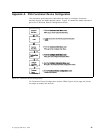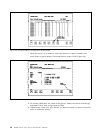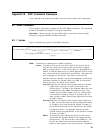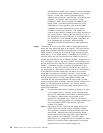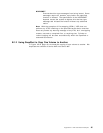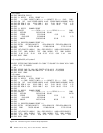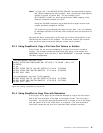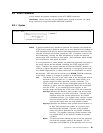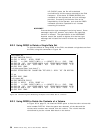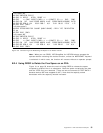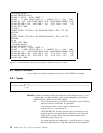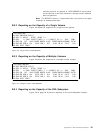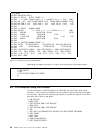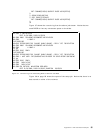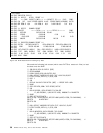
B.2 DDSR Command
In this section we present examples of the IXFP DDSR command.
Remember: Before you can use the DDSR option against a volume, you must
bring it offline by using the DVCDN VSE/ESA command.
B.2.1 Syntax
──IXFP─ ─── ───DDSR ──┬ ┬──────────────────────────────── ──┬ ┬─────────── ──────────────────────────────────────────────
││┌┐────────────────────────────── └ ┘──,NOPROMPT
├┤───
┴,unit ──┬ ┬───────────────────
││└┘──(dcyl ──┬ ┬──-dcyl )
││└┘──.ncyl
└┘──,unit(DSN=′ data-set-name′) ────
Figure 28. Syntax of IXFP DDSR Command: Details
DDSR If specified without any additional operand, the operator can delete the
VTOC entries and all physical space for all non secured files residing on
VSE-managed RVA devices whose associated expiration date has been
reached and which have been created by VSE. A request is sent to the
RVA subsystem, causing the RVA subsystem to release the physical
extents that VSE considers as free space. Once released, these extents
are reclaimed for free space allocation.
If a unit parameter is used, without any additional operands, the data on
the entire volume will be deleted (including the VTOC and the VOL1
label). Therefore the volume must be reinitialized (ICKDSF) before it is
used as a regular data-pack again, assuming it is not going to be used
as a SNAP target device, in which case such an initialization run would
be obsolete. VSE requires the volume to be DOWN (DVCDN command)
if the whole volume or a range of cylinders is to be deleted.
unit The device ID (cuu) or the VOL1 label of the device that should
be either totally released or, if a data set name (DSN=) or a
cylinder range has been specified, partially released. The
VTOC on this device will remain unchanged unless a file was
released, in which case the appropriate labels will be deleted
from the VTOC. If you release the whole volume, or the
cylinder range containing the VTOC, the VTOC will be deleted.
dcyl-dcyl Specifies the decimal start cylinder and end cylinder
where deletion is to start and to end. Cylinder is the
smallest entity that can be specified for any DDSR
command function. The highest (end) cylinder number
must not exceed 32767, and the start cylinder number
must not be higher than the end cylinder number.
dcyl.ncyl Specifies the decimal start cylinder where deletion is
to start and provides the number of cylinders (ncyl)
that should be released. Cylinder is the smallest
entity that can be specified for any DDSR command
function. The highest resulting cylinder number must
not exceed 32767 or the device′s number of primary
cylinders.
DSN= The data set name identifying the file on the specified
unit that the operator wants to be deleted. The file
must be a non-VSAM file, If the specified unit is in the
Appendix B. IXFP Command Examples 49



